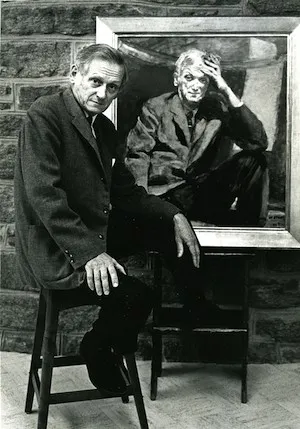1963 Astronomer Peter van de Kamp Discovers Planetary System

Peter van de Kamp
In 1963, astronomy professor and director of the Sproul Observatory Peter van de Kamp (1901-1995) made headlines when he announced that a planet about the size of Jupiter was orbiting around Barnard's Star, a red dwarf star six light years away from Earth. Although he didn't actually see it, he credited the deviations, or wobble, in the position of Barnard's Star to the gravitational tugging of a large planet.
Though scientists and science fiction writers had assumed that such planetary systems existed in the universe, the actual discovery of one was like finding astronomy's Holy Grail. Prof. van de Kamp was already well known in the field for his work in astrometry, the precise measurement of the positions of stars. This announcement made him one of the most famous astronomers in the world.
A native of Holland, van de Kamp came to Swarthmore in 1937, where he taught for 35 years. Also a musician and composer, he directed the College orchestra from 1944 to 1954 and on Wednesday nights hosted Charlie Chaplin "seminars" (so named because at that time movies were only allowed to be shown on weekends) from his collection of Chaplin silent comedies. Performing piano accompaniment for the films, van de Kamp composed tunes that he named after the stars he observed. Peter Schickele '57 composed "The Easy Goin' P.V.D.K. Ever-Lovin' Rag" for van de Kamp's 70th birthday, and in 1980 the International Astronomical Union named an asteroid for him.
In 1976, astronomer Wulff Heintz, van de Kamp's chosen successor, published the first of a series of articles that cast doubt on van de Kamp's famous findings. Further study proved that the deviations van de Kamp accurately recorded were in Swarthmore's 24-inch telescope, not Barnard's Star.
On May 1, 2009, the Peter van de Kamp Observatory atop the College's Science Center was dedicated. Housing a 24-inch reflecting telescope, the observatory is used for both teaching and research. The telescope was purchased with a grant from the National Science Foundation. The dome that houses it was the gift of an anonymous alumna who asked that the entire observatory be named for van de Kamp.



